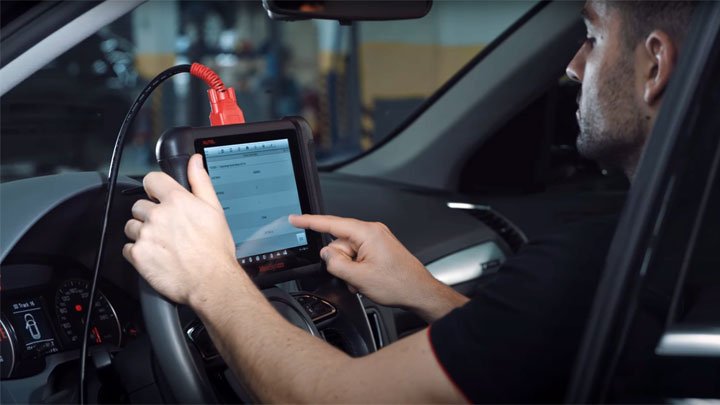Comprehensive Guide to Door Lock Repair: Ensuring Security and Functionality
Door locks play a crucial function in protecting homes and businesses, offering peace of mind and safeguarding valuable assets. However, gradually, door locks might experience malfunctions or wear due to different aspects. This short article checks out the common problems related to door locks, reliable repair strategies, and valuable maintenance pointers for guaranteeing their durability and performance.
Understanding Door Lock Types
Before diving into repair methods, it is necessary to comprehend the various kinds of door locks. Each type may provide unique problems needing various techniques to repair. The most common door lock types include:
| Lock Type | Description | Common Issues |
|---|---|---|
| Deadbolts | Bolt that extends into the door frame for security. | Sticking, difficulty turning, misalignment |
| Knob Locks | Cylindrical lock found on doors. | Loose knobs, stuck key, broken springs |
| Lever Handle Locks | Lever-operated locks often found in business areas. | Handle looseness, lock cylinder issues |
| Smart Locks | Electronic locks managed by means of app or keypad. | Connectivity issues, battery failure, software glitches |
Common Lock Problems and Repair Techniques
1. Sticking or Jammed Locks
Signs:
- Difficulty turning the key
- Key gets stuck
- Lock feels stiff
Repair Steps:
- Lubrication: Apply a graphite-based lubricant to the keyhole and key mechanism. Avoid oil-based lubes, which can draw in dirt.
- Adjustment: Check if the door or lock is misaligned. Change the screws or hinge positioning as essential.
- Cleaning: Remove dirt and particles from the lock cylinder utilizing compressed air or a tidy fabric.
2. Loose or Wobbly Knobs and Handles
Symptoms:
- Knobs or manages fall out of place
- Excessive movement when turning
Repair Steps:
- Tightening Screws: Using a screwdriver, tighten the screws that hold the knob or manage in location.
- Replacing Washers: If components are used out, consider changing washers or internal components specific to the lock type.
3. Broken Key Issues
Signs:
- A key becomes stuck within the lock
- The key breaks off in the cylinder
Repair Steps:
- Retrieval: If a key breaks off, utilize a pair of needle-nose pliers to carefully extract the piece from the lock.
- Key Replacement: For badly harmed keys, acquire a duplicate or rekey the lock to guarantee security.
4. Misaligned Locks
Symptoms:
- The door does not close correctly
- Latch does not engage with the strike plate
Repair Steps:
- Adjust Hinges: Use a screwdriver to tighten up or reposition hinges.
- Straighten Strike Plate: If the lock bolt does not line up with the strike plate, think about moving the plate somewhat to accommodate the lock.
5. Smart Lock Malfunctions
Signs:
- Lock fails to react to keypads or smart device apps
- Connection problems
Repair Steps:
- Battery Check: Replace the batteries within the smart lock if it shows signs of power failure.
- Software Update: Check for firmware or software application updates through the lock manufacturer's application.
Preventive Maintenance Tips
Preserving door locks can lengthen their life-span and decrease the possibility of malfunctions. Consider the following ideas for effective lock upkeep:
- Regular Lubrication: Apply graphite-based lube every six months to keep internal components moving smoothly.
- Inspect Regularly: Periodically inspect locks for any signs of wear, misalignment, or damage.
- Protect Against Weather: For exterior locks, think about using weather-resistant locks and make sure that they are routinely cleaned to eliminate extreme elements.
Frequently asked question Section
1. How often should I alter my door locks?
It is recommended to alter your door locks whenever you move into a brand-new home, experience a burglary, or your present locks reveal significant wear. Regular inspections can also direct timely replacement.
2. What can I do if my lock is frozen during winter?
Utilize a lock de-icer that is particularly designed for this circumstance. Applying automobile locksmith near me (like a hair dryer) might also assist, but be careful of harming the lock.
3. Can I repair a lock myself?
Lots of minor lock issues such as lubrication, tightening screws, and adjustment can be resolved DIY. Nevertheless, if the issue is extreme or needs a lock rekeying, professional assistance might be required.
4. When should I call a locksmith?
If your efforts to repair the lock stop working or if you discover yourself locked out, it is best to seek advice from an expert locksmith for assistance.
Investing time in understanding and carrying out door lock repairs can significantly enhance the security and functionality of your locks. Acknowledging common problems and proactively resolving them, while including preventive maintenance practices, can make sure that your door locks stay dependable for many years to come. Ought to problems continue or intensify, expert locksmith services are always available to protect your security needs.

